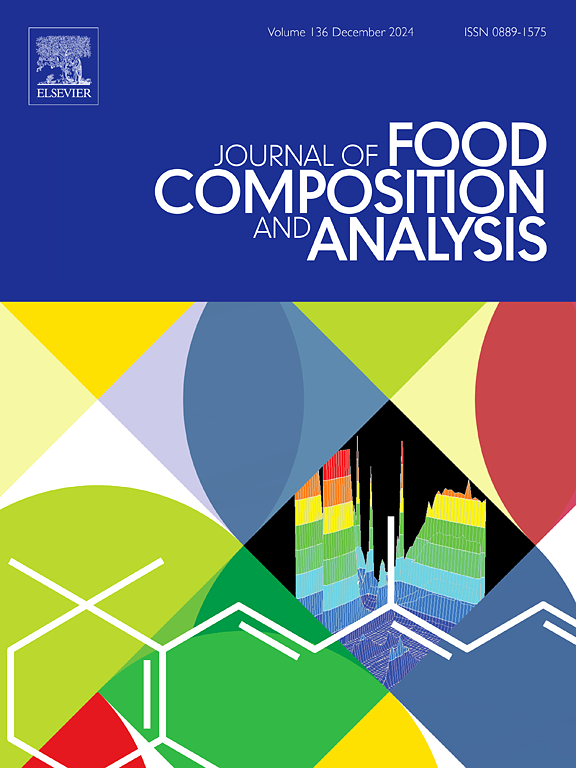Traceability and identification technology for Gastrodia elata Bl. based on mineral elements
IF 4
2区 农林科学
Q2 CHEMISTRY, APPLIED
引用次数: 0
Abstract
Gastrodia elata Bl., a traditional edible and medicinal plant, has gained increasing attention for its nutritional value and geographic origin, which are closely linked to its quality. This study aimed to evaluate the geographic origin of G. elata by analyzing its mineral element composition in combination with chemometric techniques. A total of 35 samples from three distinct regions were analyzed using ICP-MS to quantify 16 mineral elements, including essential nutrients (e.g., Ca, Fe, Mg) and trace elements. Principal component analysis, traditional discriminant analysis, orthogonal partial least squares discriminant analysis, Fisher discriminant analysis, and a multi-layer perceptron model were employed to classify the samples based on their geographic origin, achieving high accuracy. The results revealed distinct regional patterns in the mineral element profiles, with elements such as Ca, Fe, and Mg playing significant roles in differentiation. These findings highlight the potential of mineral element profiling as a robust tool for authenticating the geographic origin of G. elata. Furthermore, this approach provides a scientific basis for quality control and market regulation, ensuring the safety and nutritional consistency of G. elata as a functional food product. This study contributes to the growing field of geographic traceability and supports the standardization and quality assurance of G. elata in the food industry.
求助全文
约1分钟内获得全文
求助全文
来源期刊

Journal of Food Composition and Analysis
工程技术-食品科技
CiteScore
6.20
自引率
11.60%
发文量
601
审稿时长
53 days
期刊介绍:
The Journal of Food Composition and Analysis publishes manuscripts on scientific aspects of data on the chemical composition of human foods, with particular emphasis on actual data on composition of foods; analytical methods; studies on the manipulation, storage, distribution and use of food composition data; and studies on the statistics, use and distribution of such data and data systems. The Journal''s basis is nutrient composition, with increasing emphasis on bioactive non-nutrient and anti-nutrient components. Papers must provide sufficient description of the food samples, analytical methods, quality control procedures and statistical treatments of the data to permit the end users of the food composition data to evaluate the appropriateness of such data in their projects.
The Journal does not publish papers on: microbiological compounds; sensory quality; aromatics/volatiles in food and wine; essential oils; organoleptic characteristics of food; physical properties; or clinical papers and pharmacology-related papers.
 求助内容:
求助内容: 应助结果提醒方式:
应助结果提醒方式:


